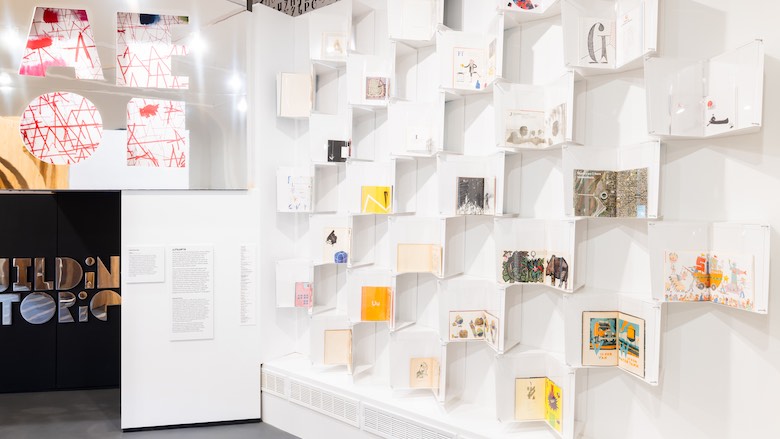National Building Museum Explores Built Environment Through Children's Books

An exhibit at the National Building Museum in Washington, D.C., offers an immersive exploration of architecture, engineering and construction found in the pages of children’s books.
Photo courtesy of the National Building Museum
The recurring, yet sometimes overlooked role of the built environment in children’s literature is being showcased in Building Stories, a new long-term exhibit at the National Building Museum in Washington, D.C.
Designed for a multigenerational audience, it offers an immersive exploration of architecture, engineering and construction found in the pages of children’s books and encourages interaction with familiar classics and new favorites through hands-on activities, media installations, sketching, reading and building stories of their own.
Occupying 4,000 sq ft of prominent ground-floor exhibition space, Building Stories is the museum's most ambitious exhibition—developed in partnership with curator Leonard Marcus, the nation’s leading expert on children’s literature, and Portland, Ore.-based exhibition and experiential design studio Plus And Greater Than.
Award-winning author/illustrators David Macaulay and Oliver Jeffers collaborated to create original environments that offer insight into their creative processes, and engage visitors to better understand what is created in books and encourage their own roles in making a better world.
 The exhibition will encourage visitors of all ages to interact with familiar classics and new favorites.
The exhibition will encourage visitors of all ages to interact with familiar classics and new favorites. Photo courtesy National Building MuseumBuilding Stories begins with “Building Readers,” an introductory gallery that explores a child’s first experiences of shapes, forms, imagery and words as they becom
Three archways inspired by the Three Little Pigs connect “Building Readers” to “Your Home, My Home,” a gallery that explores the idea and expression of “home” in its many forms: a bedroom, a house or a neighborhood and community in cultures and locations around the world. An immersive round theater with a multimedia presentation brings books such as Tar Beach, Shadow and The Snowy Day to life. The third gallery, “Scale Play,” challenges visitors’ perceptions of the environment through another recurring theme in children's literature—characters changing size. It explores what it feels like to navigate the world when one is small, and the impact of monumental architecture on how spaces are seen.
 The many parallels between the design of books and buildings are revealed as visitors Photos courtesy of the National Building Museum
The many parallels between the design of books and buildings are revealed as visitors Photos courtesy of the National Building Museum 

